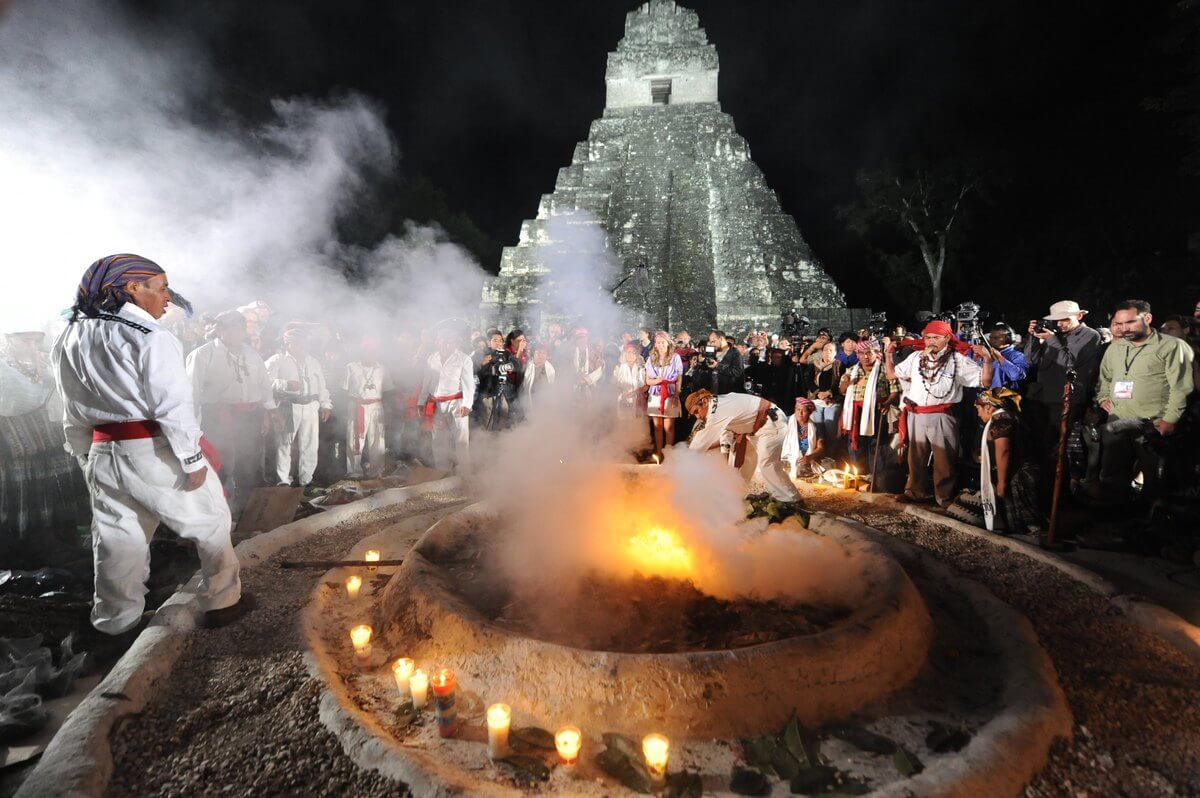In Central America, on the ancient Mayan lands, Jade is regarded as a sacred stone. A divine breath, the stone of eternity, until today it still accompanies shamans in their work as healers and spiritual guides.
In Central America, more than 3 million people are descendants of the Mayas. This same civilization, composed by several villages, far from being extinguished, knew how to preserve its ancestral cultural knowledge, their languages and their spirituality. Nature has in common with the Mayans the fact that it remains the supreme entity in the world and whose people aspire to live in harmony with the earth, fauna, flora and the whole human kind.

The Maya shamans, mediums between the earthly world and the divine world, are considered healers, male or female doctors, spiritual guides that ensure the smooth functioning of the earth, humans and animals. Shamans act between the physical and spiritual world, with great medicinal knowledge of plants.
The way the Mayans see the diseases happen on several planes, a physical plane, but also spiritual. For this, healing involves a cleansing of the soul made during a ritual where jade plays an essential role with herbal remedies.

For the Mayas, all that exists on Earth is alive. And among the elements of creation, jade occupies a quite particular position. It is the stone of breath, soul and supreme spirit associated with life, death and nature. Extremely present, this stone still exists in shamanic ceremonies. Through it, carrying a raw jade, the shamans join the creative gods in order to seek their blessing.
The green Jade varieties are better used to invoke Chaac, the god of corn and fertility, the god of rain, an important god for crops, food and harmony in society. The blue varieties, mainly appreciated by the Olmecs, are mostly used for rituals with water, symbolizing regeneration and renewal.

Altar, candles with the colors of the four cardinal points, raw jades, all constitute a set in which the shamans “connect” to the energies in order to receive and interpret. This explains the fact that jade is such a valued stone. Always in the spirit of “blow” that is associated with it, the jade keeps negative energies away and has a protective function. It connects the Mayans to their ancestors and remains since ancient times as the stone of eternity.
In the past, when a Maya died, jade beads were placed in their mouth. When a person was dying they very lightly rubbed their face with it in order to gift them with the breath of the soul. This association of the jade with the breath comes from the time of the Olmecs who saw the water steam coming out of the stone which was heated by the sun. So they thought the stone was breathing. It is the reason why very quickly jade was also associated with the wind. Numerous sculptures found in Mesoamerican vestiges still attest this.

Jade has also been used for its physical characteristics by the Maya men doctors. The Mayas were skilled dentists who used jade and turquoise prostheses and then sealed the teeth with iron pyrite. Source: Wikipedia
If the Chinese culture shares the love and respect of jade with Mesoamerican peoples, they also share many right elements of the Mayan healers’ medicine. This was shown on an excellent report by Bernard Fontenille on the Franco-German television channel Arte, about a Mayan healer in Mexico, Don Feliciano Galo, an Ah Men. In the report, we can see him using acupuncture points and explain to the reporter the importance of the vital center around the navel, which is nothing more than remember the IQ of the Asian medicine. Source: Arte
The Mayans used sweat baths to purify themselves. The “temezcal” were actual saunas. They had stone walls and ceilings with small openings at the height of the room. The water was poured over hot stones in these steam rooms. Sweat baths were used to stimulate healing perspiration (sweating), purify, and regenerate.

Archaeologists discovered sweat baths at several sites, including Tikal, Aguateca and Nakbe, but the most impressive finding today belongs to Piedras Negras, a classic Mayan city in Guatemala. Sources: Wikipedia
The Maya pharmacopoeia used and still uses fresh vegetation often in the form of baths applied directly to the skin. Depending on the disease, plants are boiled and used in drinks or herbal baths. In addition to plants, parts of animals such as snake hooks can be combined in the herbal infusions. Psychotropic substances can be used in shamanic rituals to achieve a higher state of consciousness or trance. Sources: Wikipedia
The jade in China was considered a remedy against corruption. That is why it was continually given to the leaders. The Taoist alchemists used jade to make immortality beverages. With a procedure kept in secret, they claimed to change the jade back into liquid. This potion was used to make all kinds of filters designed to emperors. Among them there were love filters that allowed them to satisfy all their concubines.
As the Mayans, the Chinese placed a jade bead in the mouth of the dead as a symbol of protection, so that the soul of the dead could fly, such as the butterfly from its chrysalis. The nine holes of the body were also covered with amulets of gold and jade. This belief was considered to protect the bodies from putrefaction.









ALFA